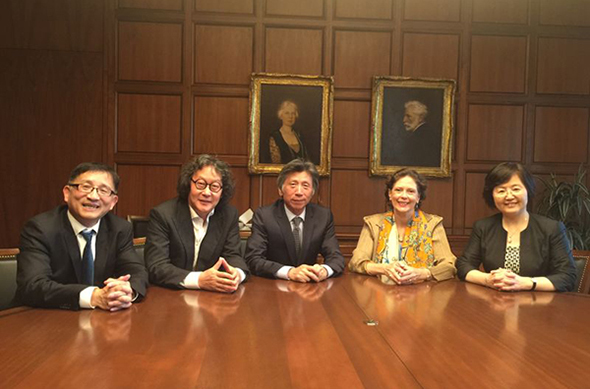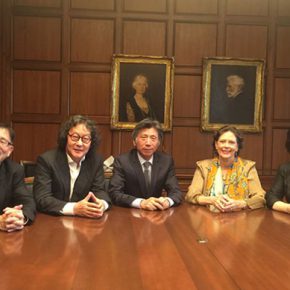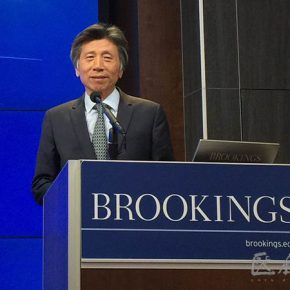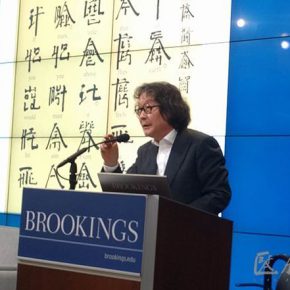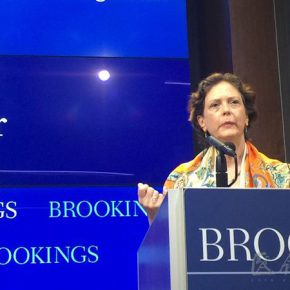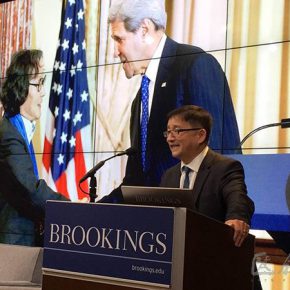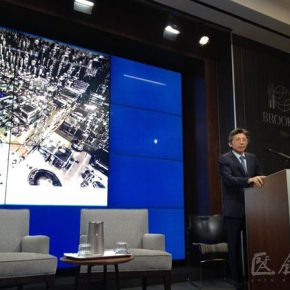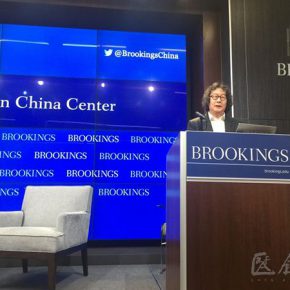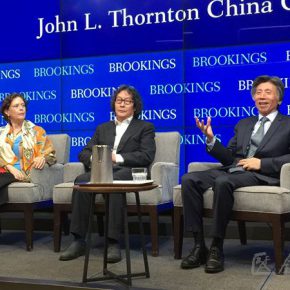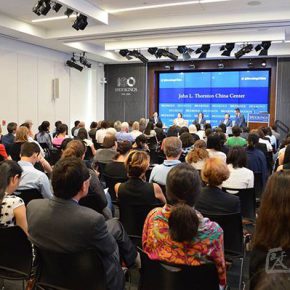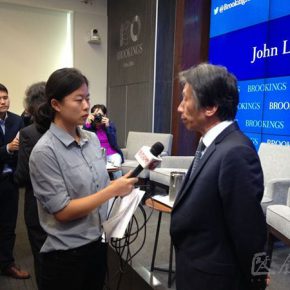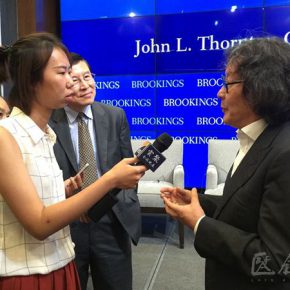On the morning of August 2, the President of the China Central Academy of Fine Arts Fan Di’an, Director of the Academic Committee of the China Central Academy of Fine Arts Xu Bing were invited to give academic lectures at the Brookings Institution in Washington DC in the United States, and they communicated and discussed with the guests that attended the lecture on topics of contemporary Chinese art.
The Brookings Institution is a nonprofit public policy organization based in Washington, DC. Its mission is to conduct in-depth research that leads to new ideas for solving problems facing society at the local, national and global level. It is one of the most famous think tanks in the United States, known as America's most influential think tanks. John L. Thornton China Center of the Brookings Institution has played an important role in the policy of U.S.A towards China and promotion of the development of Sino-US relations. This event takes "Vitality, Diversity and Diplomacy in Contemporary Chinese Art" as the theme, inviting Fan Di’an and Xu Bing to pay a special visit to Washington DC and give thematic speeches, which was the first academic event themed on China Contemporary Art held by the Brookings Institution.
Before the speech began, on behalf of the Institution, Li Cheng, Director of John L. Thornton China Center delivered welcoming remarks, he said: "When it comes to Sino-US relations, many people in Washington easily think of the South China Sea, East China Sea, the nuclear threat, cyber attacks, trade wars, the growing nationalist sentiment between the two countries, fear that the other side is getting stronger and other topics. When we only focus on the politics, economics and security fields between the two countries while ignoring other important, perhaps more influential forces, our vision will become very narrow...today, we are honored to have two important guests Mr. Fan Di’an and Mr. Xu Bing from the field of Chinese contemporary art, they are the messengers of the culture, the most creative people in the art world, their work and the work they are engaged in are beyond geographical and cultural barriers." Important guests who attended the event included Li Hong, Chinese Embassy Minister Counsellor, Jan Stuart, Director of Chinese Art Division in the Smithsonian Museum.
Fan Di’an’s speech was entitled "Chinese Art Ecology Under the Intersection of the Global and the Local". He first talked about today's China as becoming a topic of discussion in the world, great changes in Chinese society is also reflected in the visual arts creation. Today Chinese Art is experiencing the intersection and stirring context of the global culture and local culture, the comprehension of the creative features and contemporary attributes of Chinese art contributes to a comprehensive understanding of Chinese culture. He described the construction of art museums in recent years, and the rise of the art district and booming development of the art market, he noted that from art to social acceptance, from art production to cultural consumption, a new ecological structure is gradually forming and it provides a guarantee for the healthy development of Chinese art. He analyzed several important characteristics of Chinese contemporary art creation on the basis of many examples of the artists, including the "urbanization" topic, the art forms of "new realism”, experiments of new media, art towards public spaces and so on. He emphasized that China has a rich artistic tradition and cultural resources, in the context of globalization, contemporary creation should be put into the onsite reality of social development on the one hand and on the other hand great importance should be attached to the contemporary conversion of traditional culture resources.
Xu Bing in his speech talked about the realities of rapidly changing contemporary society providing opportunities for artists, but also it poses a challenge. He combined this with his practice in two ways so as to analyze the sources of contemporary artistic creativity. First, the creation of contemporary art requires the artist to attach great importance to the traditional values of civilization and cultural genes, transformation of traditional culture can be conducted from the perspective of thinking and practical methodology, traditional culture plays an important role of adjustment and enlightenment today. Secondly, the artist obtained creative energy from social reality, China society is a “site” gathering enormous energy, this energy is converted to the language of art, it is possible to produce the power of art. He introduced his creative ideas of "New English Calligraphy”, "Book from the Ground" “Background Story", and "Phoenixes" and several series of works, he also conducted discussions on these questions in combination with his latest experimental film "Dragonfly Eyes”.
Jan Stuart, Director of Chinese Art Division in the Smithsonian Museum mentioned in her subsequent statement that she agreed with the opinions of Fan Di’an and Xu Bing. She stated that, exchanges between China and the world have gone through several centuries, with this progress, the Western world has obtained resources from China, meanwhile China has also been shocked by the West. In the current context, it is no longer important to discuss "the West" and “the East" separately, what remains important is to open the eyes to recognize the pluralistic developmental trends and values of different cultures, in this sense, Chinese art will gain more concern.
Finally, Fan Di’an, Xu Bing, Li Cheng and Jan Stuart were jointly addressed and answered questions put forward by journalists and guests. China News Agency, People's Daily and the Oriental TV and other media have reported on this event.
Text and Photo by Propaganda Department of the Central Academy of Fine Arts
Translated and edited by Sue/CAFA ART INFO


